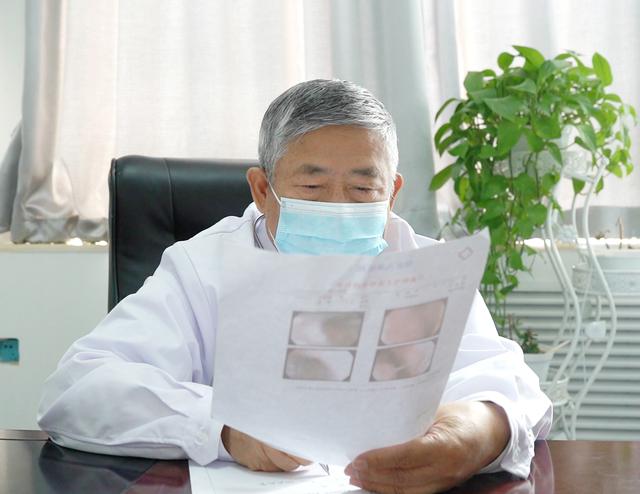病毒和细菌的区别通俗点(了解病毒和细菌区别)
病毒和细菌的区别通俗点(了解病毒和细菌区别)最重要的两种微生物是细菌和病毒。The two major types of microbes are the bacterium and the virus.微生物是裸眼不可见的有机体,它们侵入人体进行复制。The symptoms caused by an infection depend on the location nature of the infection and type of the microbe.感染引起的症状取决于感染的位置,性质和微生物的种类。
病毒肆虐的日子,让我们好好窝在家为国家做贡献,实在无聊了来学学医学常识和英语。今天来了解病毒和细菌的区别。

Infectious diseases are cause by microbes.
传染性疾病是由微生物引起的。
These are small organisms which are invisible with the naked eye and invade your body to get multiplied.
微生物是裸眼不可见的有机体,它们侵入人体进行复制。
The symptoms caused by an infection depend on the location nature of the infection and type of the microbe.
感染引起的症状取决于感染的位置,性质和微生物的种类。
The two major types of microbes are the bacterium and the virus.
最重要的两种微生物是细菌和病毒。

Viruses are the smallest in size of all the microbes.
病毒是个头最小的微生物。
They are able to attack almost any living organism.
它们能攻击几乎任何活的有机体。
A virus uses another organism like a human being as a host.
病毒使用其他有机体,比如人类,当作宿主。
It means that the virus invades a cell ofthe body and uses parts of the cell to multiply itself.
也就是说,病毒侵入人体细胞,使用细胞的部件复制自己。
In this way hundreds of new viruses are produced which can spread throughout the body.
通过这种方法,成百上千的病毒被复制出来,传播到身体各个部位。
They can also infect new organisms.
它们还可以感染新的有机体。
Viruses can’t survive outside the body ofthe host for long.
病毒无法在宿主体外长时间存活。
They can only survive a few seconds to minutes after leaving that host.
离开宿主后,它们只能存活几秒到几分钟时间。
Bacteria are much larger than viruses.
细菌比病毒大得多。
They live almost everywhere and many of them don’t cause infection.
它们几乎在任何地方都可以生存,而且很多细菌并不引起感染。
A bacterium multiplies itself by division.
细菌通过分裂复制自己。
If the conditions are favourable (temperature nutrition) some bacteria can multiply after every 20 minutes.
如果条件合适(即有合适的温度、营养),一些细菌可以每20分钟复制一次。
Your intestines contain large number of bacteria.
人类肠道含有大量细菌。
Normally these bacteria don’t cause any problem.
正常情况下,这些细菌不会引起任何问题。
Actually they are quite useful in various ways like digestion.
其实它们有很多用途,比如帮助消化。
But if you have weak immunity the balance may become disturbed and complaints like diarrhea constipation or cramps may occur.
但如果免疫力比较弱,平衡可能会被打破,从而出现拉肚子、便秘、腹部绞痛等疾病。
Viruses and some bacteria can cause infections.
病毒和一些细菌可以引起感染。
Locally an infection causes redness and swelling.
感染会引起局部红肿。
The tissue may also become warm and painful.
组织还可能发热、疼痛。
Common symptoms of a viral or bacterial infection are fever fatigue and general malaise.
病毒或者细菌感染的常见症状是发烧、疲倦和全身不适。

Mostly viral infection is simple and the complaints subside by themselves.
多数情况下,病毒感染比较容易解决,病痛会自行消失。
It is difficult to eliminate viruses.
病毒很难消除。
Specific medicines have been developed only for certain viruses.
目前只针对某些病毒开发了特定药物。
Also an infection usually resolves by itself.
而且感染通常会自行消失。
If this is not the case the physician can prescribe antibiotics.
如果不消失,医生可以开抗生素。
An antibiotic is only effective against a bacterium not against a virus.
抗生素只对细菌有效,对病毒无效。
It is important to prevent the spread of microbes.
防止微生物传播很重要。
Good hygiene can play an important role in prevention.
良好的卫生对于防止微生物传播非常重要。
Regularly wash your hands and cover yourmouth with tissue paper or cloth whenever you cough or sneeze.
勤洗手,咳嗽或打喷嚏时用纸巾或布捂住嘴。
Take proper care of little wounds by disinfecting them with iodine or alcohol.
适当处理小伤口,用碘酒或酒精消毒。

词汇与短语
1. bacterium,[bæk'tɪərɪəm],n. 细菌,单数,复数为bacteria [bækˈtɪəriə]。
2. virus,[ˈvaɪrəs],n. 病毒。
3 . immunity,[ɪˈmjuːnəti],n. 免疫力。
4 . diarrhea,[ daɪə'riə],n. 腹泻,痢疾。
5. cough,[kɒf],v. 咳嗽;n. 咳嗽。
6. sneeze,[sniːz],vi. 打喷嚏;n. 喷嚏。
7. tissue paper,纸巾。
8. complaints,[kəmˈpleɪnt],n. 抱怨;诉苦;疾病。




